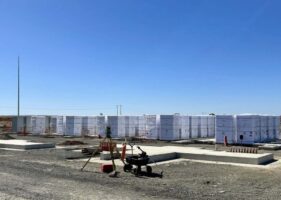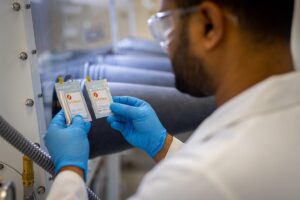More than three million households in Australia already know how rooftop solar can reduce their electricity bills. At least 110,000 also have batteries and a growing number are lining up to buy electric vehicles.
These purchases are not simply household appliances for personal use. If we plan our technical, regulatory and market integration well, these distributed energy resources can be part of Australia’s electricity infrastructure and bring down the costs of the system for everyone.
All forecasts point to distributed energy resources playing a major role in the future electricity supply, demand response, and grid services.
State governments have a critical role to play here in accelerating the integration of distributed energy resources into our electricity system and speeding up their participation in energy and grid (ancillary) services markets.
A new report by the Institute for Energy Economics and Financial Analysis (IEEFA) argues state governments should focus more attention on making the most of the $A25 billion spend to-date by households and businesses on distributed energy resources – including rooftop solar, batteries, electric vehicles, and smart appliances.
Distributed energy resources are fast to install, especially in comparison with large-scale wind and solar which can take several years and are dependent on the availability of transmission infrastructure.
Consumers’ estimated $A150 billion spend on distributed energy infrastructure over the next 10 years should be leveraged by state governments to support the cheaper, faster and necessary decarbonisation of the electricity system to urgently address climate change targets.
Australian households have spent more than $15 billion on rooftop solar alone, over $1 billion on small-scale batteries, and expenditure on electric vehicles is rapidly increasing.
Commercial and industrial facilities are also investing in solar, batteries and in some cases, smart control equipment to manage energy use.
If only half of Australia’s 14 million cars are replaced with EVs during the next decade, it will provide a $140 billion investment in batteries on wheels.
According to the Australian Energy Market Operator (AEMO), by 2050, rooftop solar is expected to provide about a quarter of electricity consumption, or about 75 gigawatts (GW). At that time, about three-quarters of all dispatchable (“on demand”) electricity capacity will be distributed.
EVs and batteries, and flexible demand in homes, businesses and factories, will balance energy demand and the supply from variable renewables, as they will be the largest capacity available to draw upon. As the sun sets or wind speeds decrease, the millions of distributed energy assets will be critical to ensuring sufficient supply to the electricity system, alongside large-scale batteries and pumped hydro.
While the federal election result should spur major advances in national renewable energy projects, the role of state governments is critical across the nexus of energy, buildings, planning, transport and technology portfolios. Collaboration will be required for success. All of these portfolios need to be involved in smart policy and planning.
In particular, more efficient housing is the best investment state governments can make to tackle energy poverty. Social housing needs to be upgraded to be more efficient, with rooftop solar added and polluting gas connections and appliances removed to create healthier, cheaper-to-run homes for people who most need it.
The Institute for Energy Economics and Financial Analysis report makes 10 recommendations for state governments to consider – and deliver on – to assist the accelerated uptake and integration of distributed energy resources in Australia:
- Invest in more energy efficient housing
- Electrify homes and exclude on-site gas from new developments
- Remove gas connections from all buildings as gas has high-level methane emissions and its’ role as a transition fuel has finished
- Legislate a demand response capability requirement for priority household appliances to ensure larger appliances (such as air conditioners) can be used as a resource
- Expand the demand response mechanism (DRM) to include aggregated household distributed energy resources to enable participation in the wholesale DRM
- Upgrade energy efficiency schemes to reward “emiciency” (emissions savings by time of day) and “pay for performance” programs based on actual verified savings
- Support managed EV charging including national technical standards and planning requirements
- Investigate how to update distribution network service provider (DNSP) revenue regulation
- Determine the commercial viability of supplying Standalone Power Systems (SAPs) and microgrids to remote, regional and climate vulnerable consumers
- Ensure the compliance and enforcement of distributed energy resource devices, software and installations is undertaken by the Australian Energy Regulator (AER)
State governments can lower the overall cost of the energy transition by taking a major role in optimising the use of household and businesses’ distributed energy resources for the benefit of all energy consumers.
This will enable cheaper, faster decarbonisation.
Gabrielle Kuiper is a DER specialist and IEEFA guest contributor. Read IEEFA’s new report: Cheaper Faster Decarbonisation – What State Governments Can Do to Support Distributed Energy Resources










